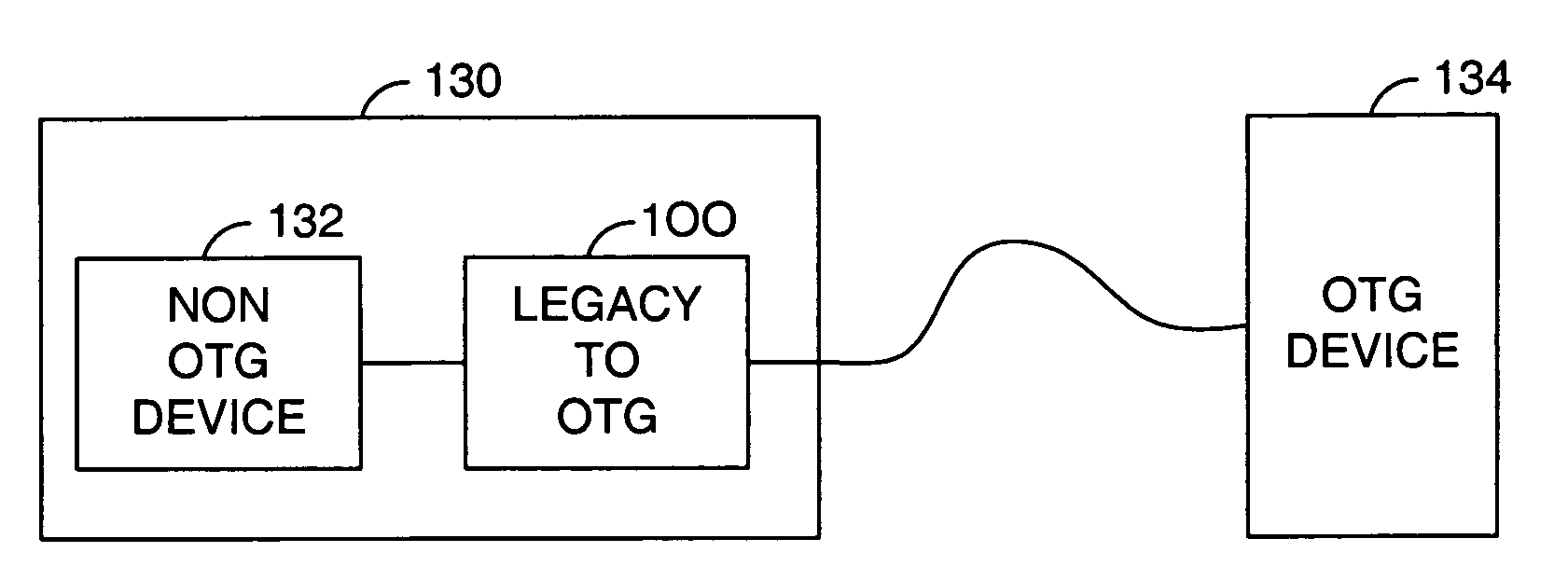Method and apparatus for adding OTG dual role device capability to a USB peripheral
a dual-role device and usb peripheral technology, applied in the direction of instruments, electric digital data processing, etc., can solve the problems of not having an existing usb on-the-go (otg) semiconductor device, the firmware requirements and architecture of a usb host are generally very different from that of a usb peripheral, and the launch of “pilot” products to test the market is expensive, so as to achieve fast and low-cost on-the-go
- Summary
- Abstract
- Description
- Claims
- Application Information
AI Technical Summary
Benefits of technology
Problems solved by technology
Method used
Image
Examples
Embodiment Construction
[0020]Referring to FIG. 1, a block diagram of a circuit (or system) 100 in accordance with a preferred embodiment of the present invention is shown. The system 100 may be configured to enhance a Universal Serial Bus (USB) peripheral device by adding USB on-the-go (OTG) functionality without substantially redesigning the device. The circuit 100 may be compliant with the USB specification version 1.0 (published November 1996), the USB specification version 1.1 (published September 1998), the USB specification version 2.0 (published April 2000), and / or the USB On-the-Go supplement to the USB 2.0 specification version 1.0 (published December 2001), which are hereby incorporated by reference in their entirety.
[0021]USB 1.1 compliant devices can operate at low speed (1.5 Mbits / sec) and / or full speed (12 Mbits / sec). USB 2.0 compliant devices can operate at high speed (480 Mbits / sec) as well as low and full speeds. USB 1.1 speeds of low and full speed are often referred to as “classic” USB....
PUM
 Login to View More
Login to View More Abstract
Description
Claims
Application Information
 Login to View More
Login to View More - R&D
- Intellectual Property
- Life Sciences
- Materials
- Tech Scout
- Unparalleled Data Quality
- Higher Quality Content
- 60% Fewer Hallucinations
Browse by: Latest US Patents, China's latest patents, Technical Efficacy Thesaurus, Application Domain, Technology Topic, Popular Technical Reports.
© 2025 PatSnap. All rights reserved.Legal|Privacy policy|Modern Slavery Act Transparency Statement|Sitemap|About US| Contact US: help@patsnap.com



